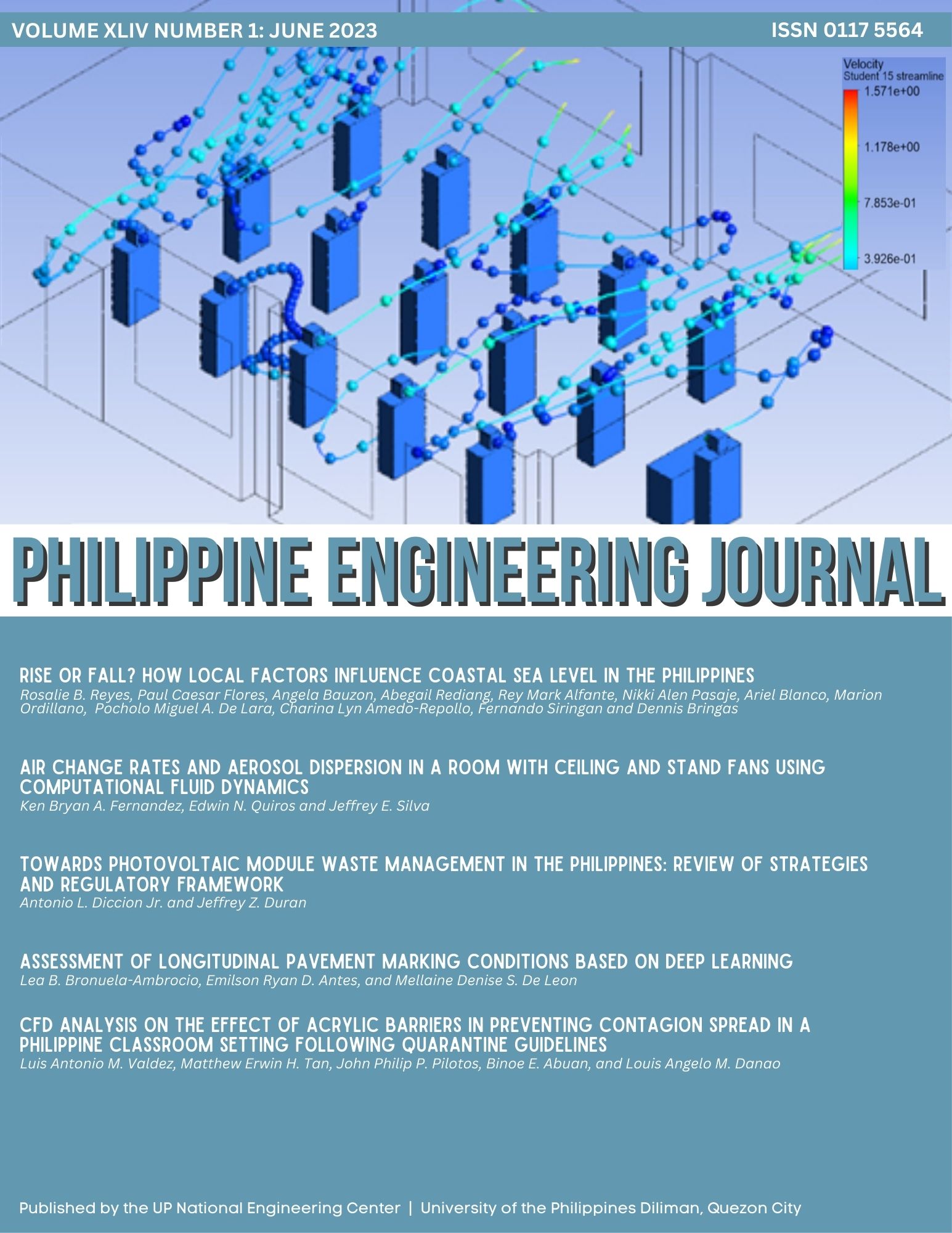CFD Analysis on the Effect of Acrylic Barriers in Preventing Contagion Spread in a Philippine Classroom Setting Following Quarantine Guidelines
Abstract
The resumption of face-to-face classes by the Philippine Department of Education (DepEd) requires a study of the planned measures to mitigate the risk of airborne diseases such as COVID-19. This study used computational fluid dynamics (CFD) streamline analysis to compare air flow in an open-air ventilation classroom that follows the DepEd standards when physical barriers divide individuals inside the room, and a similar setup without barriers. Visual inspection of streamlines generated at inlet speeds of 1 m/s, 2 m/s, and 3.5 m/s, showed that barriers in the setup only prevent airborne contamination if all individuals remain at their assigned positions at all times, without movement to enter, transit, or exit. The barriers facilitate air swirls that pose a risk to individuals who enter these regions of trapped air. Regardless of inlet velocity, the case with physical barriers installed was universally found to be effective in preventing transmission if all movement inside the room is completely restricted but was found have a greater risk of infection if any movement of individuals inside the classroom, whether it be to enter, transit, or exit within the room, is allowed. Thus, the setup without barriers was found to be generally more effective in preventing the spread of COVID-19.


